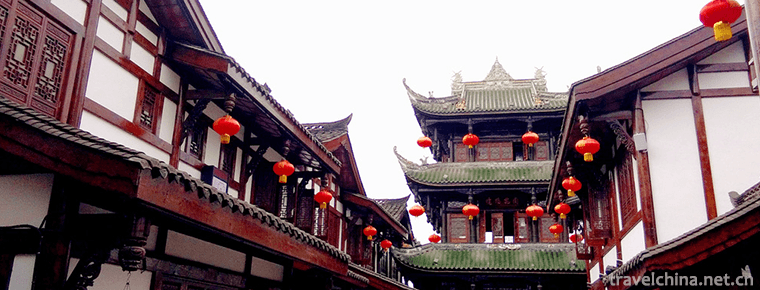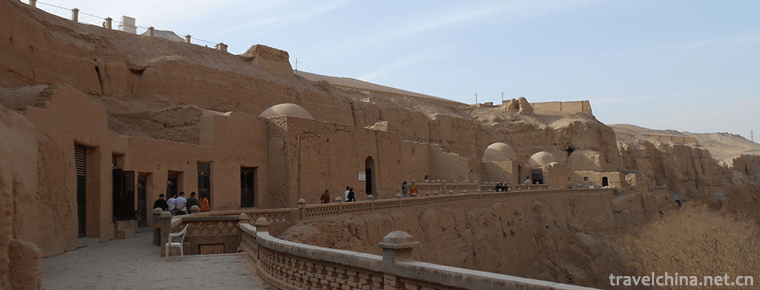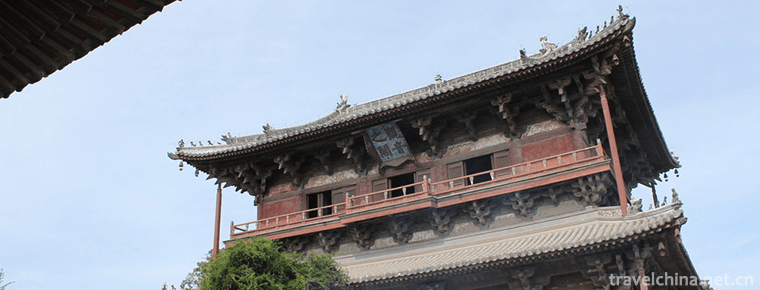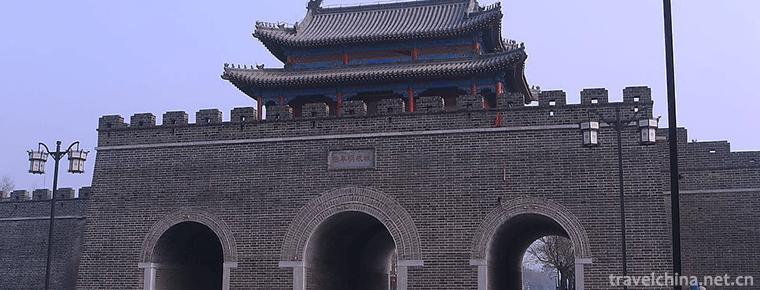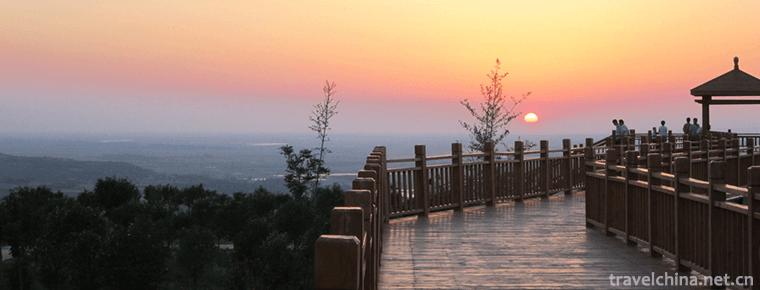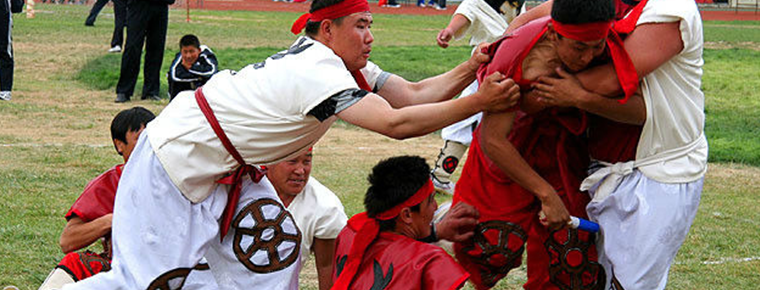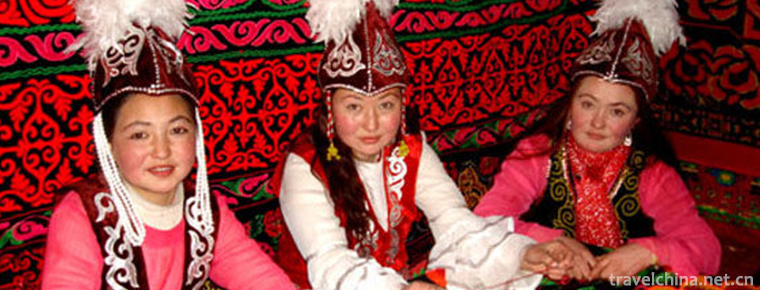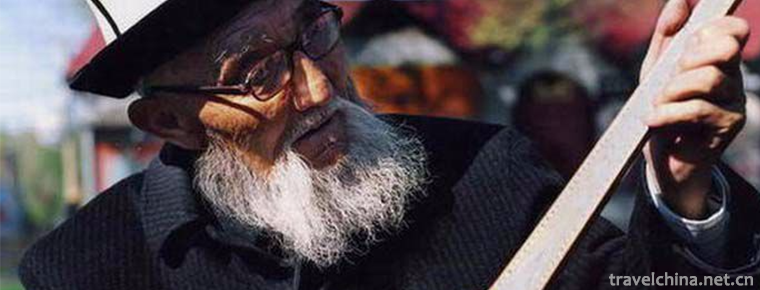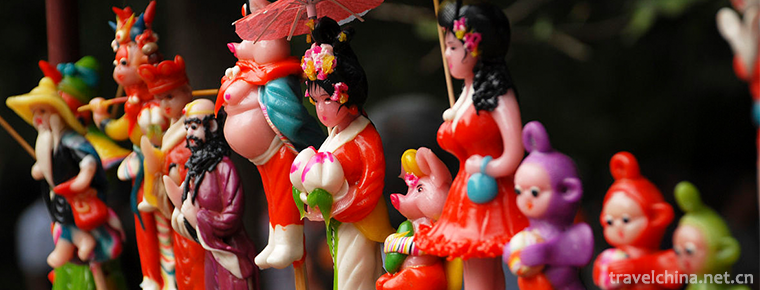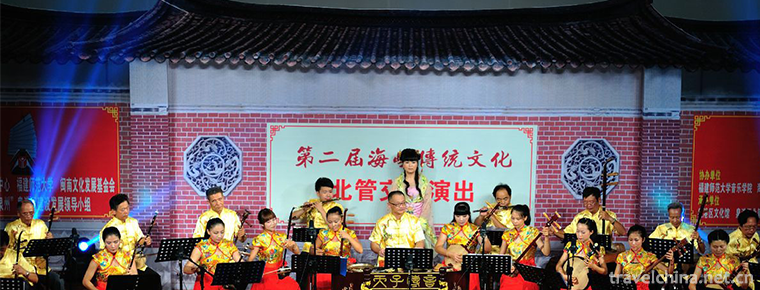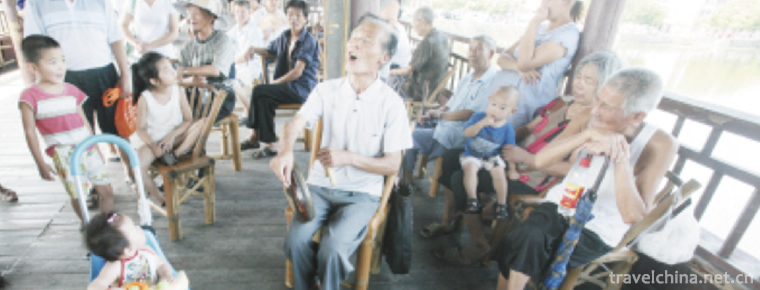Qinhuai Lantern Festival
Qinhuai Lantern Festival
Qinhuai Lantern Festival, also known as Jinling Lantern Festival and Confucius Temple Lantern Festival, is a popular folk cultural activity in Nanjing. It is mainly held from Spring Festival to Lantern Festival every year and lasts for more than 50 days. It is the first national intangible cultural heritage. It has the reputation of "the First Lantern Festival in the World" and "the First Lantern Festival in the Qinhuai Lantern Festival" and is the only lamp fair in China that integrates the lamp Festival Large-scale comprehensive Lantern Festival is also the longest lasting, largest number of participants and largest Folk Lantern Festival in China.
Qinhuai Lantern Festival has a long history. As early as the Southern Dynasty, the traditional Lantern Festival was held in Nanjing, the capital of China. Its grand occasion is the first lantern festival in China. After the early Ming Dynasty, the paintings of the Qinhuai River hanging lanterns (commonly known as "lantern boats") also became famous all over the world. Historically, the Qinhuai Lantern Fair was mainly distributed in the Qinhuai River Basin of Nanjing. Since the 20th century, it has mainly concentrated in the area of Confucius Temple. Now it has expanded to five miles east of the "Ten Miles Qinhuai River". The core areas include Confucius Temple, Zhanyuan Park, Egret Island Park, Wu Jingzi's former residence, Jiangnan Gongyuan, Zhonghua Gate, Lao Mendong, Dabao Ensi Site Park and Zhonghua Road, Pingjiang Fu Road, Zhanyuan Road, Zhany Papi Road.
Qinhuai Lantern will place people's good wishes and pursuits of life through various forms of lanterns, such as lanterns, lanterns, lanterns, street lights and so on. Other folk arts such as Nanjing paper-cut, diabolo, rope knot, sculpture, shadow, animal dance, Yangko, stilts and so on will also develop rapidly, which will accumulate folk culture and folk activities in other parts of China. Extreme influence.
Qinhuai Lantern Festival has great historical significance, humanistic value, economic value and social impact. As an important folk cultural activity, it is an important space for Nanjing people to continue and inherit folk culture. For a long time, it has become an important part of Nanjing culture. The local and foreign culture and art of Nanjing run through the Lantern Festival and form its artistic connotation.
Historical Evolution
Nanjing in the Eastern Wu Dynasty of the Three Kingdoms first appeared in the festival, Festival and other important occasions. If the officers and soldiers in the front return triumphantly, the officials and the people of the court and the field will gather inside and outside the capital, and create an atmosphere with incense lanterns to welcome their return or rehabilitate the army. At that time, brocade technology promoted the development of silk weaving industry in Jiangnan, and provided a technical basis for the production of Lantern color.
According to documents, as early as the beginning of the Southern Dynasty, the capital city of Nanjing held Lantern Festival. In order to pray for good weather, a happy family and a peaceful world, the scene of colorful lanterns began to move from the forbidden court of the deep palace and religious places to the masses of the people. The scene of "full of lights in the city" was quite spectacular. In this regard, Emperor Xiao Gang and Empress Chen of Liang Jianwen used vivid poems to depict the social customs of the Southern Dynasty in which lanterns were used to add festive atmosphere.
During the Eastern Jin and Southern Dynasties, Nanjing was the capital of China at that time. On the banks of the Qinhuai River, many high-ranking officials, nobles and nobles lived. Every Lantern Festival, they imitated the imperial court and decorated with lanterns. The Eastern Jin Dynasty poet Xi Chiao has a poem "Poetry Lantern" describing the situation of lighting at that time.
During the reign of Emperor Xiaowu of Southern Song Dynasty, paper technology developed rapidly and cost was low. It replaced a large number of applications of silk fabrics, and made the lighting art develop rapidly.
Since the Sui Dynasty, the custom of decorating lanterns and lanterns on Lantern Festival began to formally take shape. The activities of decorating lanterns and watching lanterns on Lantern Festival began to prevail. The custom of decorating lanterns in Nanjing was described in detail in Sui Shu of Wei Zheng in Tang Dynasty.
Since the Tang Dynasty, Lantern Festival Lantern Festival Lantern Festival has officially become a folk custom, and its scale has also developed rapidly. The opening time of lanterns was extended from one night of Lantern Festival to the fourteenth to sixteenth nights of the first month, and curfews were lifted during this period. When watching lanterns in Lantern Festival in Tang Dynasty, men and women, old and young, had night trips in succession, and the scene was very prosperous. During this period, folk artists specializing in making lanterns began to emerge along the Qinhuai River in Nanjing.
During the Northern Song Dynasty, the lantern opening time of the Lantern Festival increased by five nights on the 17th and 18th of the first month. In the meantime, the custom of writing riddles on lanterns also appeared. In the first year of Jingyou in the Northern Song Dynasty (1034), the most sacred Wenxuanwang Temple (now the Confucius Temple) was built in Nanjing, along the Qinhuai River, it became a scenic spot. The lantern fairs in the area of Confucius Temple began to appear and developed rapidly.
After Chunyou three years (1243) in the Southern Song Dynasty, the Lantern Festival lighting time increased to a total of six nights on the thirteenth day of the first month.
After Zhu Yuanzhang, the founding emperor of the Ming Dynasty, built the capital of Nanjing, he advocated the Lantern festival, which lasted for ten nights every year, making it the longest Lantern Festival in Chinese history. Qinhuai Lantern Festival has reached a climax of development in this period. Zhu Yuanzhang spends a lot of manpower, material and financial resources every year to produce a considerable number of color lanterns to attract people to participate in the grand Lantern Festival.
The Lantern Festival of Hongwu in the Ming Dynasty (1372) was an ingenious order to light thousands of water lanterns on the Qinhuai River. Zhu Yuanzhang is also an expert in making lantern riddles, which promotes the content of Lantern Festival to be more colorful.
In the early seven years of Yongle in the Ming Dynasty (1409), Zhu Di, the ancestor of the Ming Dynasty, gave 100 officials ten holidays on the Yuan Festival, and continued to display lights and colors to create a festive atmosphere. Three years later, it was ordered that outside the noon gate of the Nanjing Imperial Palace, skilled craftsmen gather energy to organize lantern festivals, carefully tie up the "Long Live" lanterns in Aoshan and enjoy themselves with the people. This will happen year after year. After the mid-Ming Dynasty, Nanjing had become the largest city in the world at that time. The Nandu Fanhui Scenery Map and other pictures depicted the lively scenes of Aoshan and the people watching the performance with dazzling fireworks. The Lantern Festival depicted in Zhengde Jiangning County Chronicle in the late Ming Dynasty was even more flourishing.
Since the Ming Dynasty, the prosperity of lights along the Qinhuai River has never been seen in the world. Only the varieties of lights in Qinhuai River have gradually developed to more than two or three hundred kinds. Even in other festivals, such as the Dragon Boat Festival, the scenes of lanterns and colors are reaching a climax. The flourishing events along the Qinhuai River, such as flowing brilliance, oar sounds and lanterns, singing and dancing romance, have also attracted scholars and poets of all dynasties to linger and chant incessantly: "All flowers suspect spitting at night, four lights seem to contain spring", "a garden light falls from the sky, ten thousand corals come to the sea", "bright lights first try nine micro-suspensions, Yao Guan returns to spring all night", "red lights on both sides shoot blue waves, and a blue oar swings across the Milky Way." From the dramas and novels handed down and Zhu Ziqing's works of literature and art, such as Qinhuai River in the Shadows of Roller Sounds and Lanterns, we can see the social pictures of Qinhuai and Nanjing's lighting prosperity at that time. Since then, every Lunar New Year, around the Lantern Festival, the Qinhuai River is full of lanterns, dances and carnivals, a happy, peaceful and prosperous Festival scene, Qinhuai Lantern will enjoy the reputation of "Qinhuai Lantern Painted under the World", Qinhuai River hanging lanterns (commonly known as "Lantern Boat") also became famous in the world.
After the entry of the Manchu and Qing Dynasties into the customs, the local customs have been basically continued and developed. The Lantern Festival lantern viewing event has been described many times in the literary masterpiece A Dream of Red Mansions. Every year on the Lantern Festival, people rush around the Confucius Temple, gongs and drums are loud in the sky, and its lights are more prosperous than in the Ming Dynasty.
In the middle of the third year of Tongzhi (1864), the Hunan Army of the Qing Dynasty invaded Nanjing, causing great damage to the urban facilities and greatly impacting the Lantern Festival lantern-making custom. During the four years of Tongzhi in the Qing Dynasty (1865), Zeng Guofan, intending to restore the prosperity of the past, dredged the Qinhuai River and rebuilt some Confucius Temple buildings to restore the custom of Lantern festival. At that time, Huizhou businessmen made lanterns very well known, known as "Huizhou lanterns", they had organized a grand "lantern-raising party", very lively. In addition, the Dragon lanterns made by Hunan soldiers stationed in Nanjing at that time were also well-known, enriching the variety of lanterns.
During the period of the Republic of China, there were records in the Capital Chronicle at that time: "The lamp market was flourishing in Puqiao, Commentary Street, Confucius Temple, etc." But because of the country's long civil war, the lantern venue was once greatly affected. In the twenty-six years of the Republic of China (1937), the Japanese army occupied Nanjing. The ancient buildings of Confucius Temple were destroyed by the war, and the custom of lantern fair was interrupted for a time. It was not until the twenty-eighth year of the Republic of China (1939) that a small number of lanterns were occasionally sold in the area of Confucius Temple. After 34 years of the Republic of China (1945), because of the civil war between the Kuomintang and the Communist Party and the serious inflation, ordinary people were unable to enjoy lanterns again, so the custom of lantern-lighting and lantern-watching on Lantern Festival almost disappeared.
After the founding of the People's Republic of China in 1949, the custom of Lantern Festival began to recover gradually. In the 1960s, the excitement of Lantern Festival Lantern Festival has basically restored.
In 1966, after the beginning of the Cultural Revolution, folk art including lanterns was classified as the "Four Old", and the lamp market and lanterns would be totally banned.
In 1977, the Confucius Temple opened the lamp market for the first time, and this traditional custom began to restore its original appearance.
In 1984, the ancient buildings of Confucius Temple were restored with government funds, and the regional landscape was rebuilt.
In 1985, during the Spring Festival and Lantern Festival, the government of Qinhuai District in Nanjing began to organize the annual "Jinling Lantern Festival" in Dacheng Hall and Mingde Hall of the Confucius Temple, and restored the annual Qinhuai Lantern Festival in history.
In 1984, the Qinhuai Technological Lantern Association was established, and some folk artists began to produce color lanterns combining modern technology.
In 1988, the Confucius Temple Zunjing Pavilion established the Lantern Art Museum, and some large lighting groups began to appear at the Jinling Lantern Festival.
In 1996, Qinhuai District was first named "Town of Jiangsu Folk Art (Lantern Colors)" by Jiangsu Provincial Department of Culture.
In 2000, Qinhuai District was named "the hometown of Chinese Folk Lantern art" by the Ministry of Culture with the help of Qinhuai Lantern Festival.
In February 2005, during the 7th "Mountain Flower Award" (Lantern Prize) of Chinese folk literature and art, Qinhuai Lantern Painting Works "Golden Rooster Auspicious", "Qinhuai Wawawa Happy Spring Festival" and "Golden Rooster Dawn" won the Golden Award, Silver Award and Excellent Award respectively. The traditional Qinhuai lantern "Lotus Lantern" was selected by the State Administration of Posts as a special commemorative stamp for the Spring Festival in 2006. It was released to the public at home and abroad, and to the public at home and abroad. It became a gold-stamped business card displaying traditional Chinese folk art.
On December 31, 2005, the first batch of national intangible cultural heritage list recommendation projects began to be published, and the "Nanjing Qinhuai Lantern Festival" declared in the category of "historical and cultural space environment" was listed among them.
The 20th Lantern Festival, held in 2006, received more than 3 million visitors. On the day of Lantern Festival alone, the number of people watching the Lantern Festival reached 450,000.
On May 20, 2006, the Qinhuai Lantern Association was approved by the State Council to be listed in the first batch of China's national intangible cultural heritage list.
In 2007, Qinhuai District won the title of "Town of Chinese Lantern Colors" named by the Chinese Federation of Literature.
In 2007, "Qinhuai Lantern" was listed as the first batch of intangible cultural heritage in Jiangsu Province.
In April 2016, preparations for the declaration of the "Qinhuai Lantern Festival" to the United Nations List of Representatives of the Intangible Cultural Heritage of Human Beings were launched recently. By the end of 2016, it will be submitted to the Ministry of Culture for submitting to the United Nations the optional item bank of the United Nations List of Representatives of the Intangible Cultural Heritage of Human Beings, and the declaration will be submitted to the United Nations within two years at the earliest.
geographical distribution
Historically, the Qinhuai Lantern Festival was mainly distributed in the Qinhuai River Basin of Nanjing. For example, the capital was built in and out of the palaces of successive dynasties, as well as the cultural and commercial flourishing areas such as Confucius Temple, Sanshan Street, Zhuqiao, Commentary Street and Shangxinhe. After the 20th century, it was basically concentrated in the area of Confucius Temple, and now it has been extended to the Wuli Scenic Belt on the east side of "Ten Miles Qinhuai". The core areas mainly include Confucius Temple, Zhanyuan, Egret Island Park, Wang Dao Xie'an Exhibition Hall, Wu Jingzi Exhibition Hall, Jiangnan Gongyuan Exhibition Hall, Wengcheng Exhibition Hall of Zhonghua Gate, Lao Mendong, Dabao Ensi Site Park and the areas of Zhonghua Road, Pingjiangfu Road, Zhanyuan Road and Biwa Road.
Form of activity
Qinhuai Lantern Festival is mainly manifested in the colorful lanterns, full appreciation, singing and dancing carnival, etc. It is a unique and charming folk cultural phenomenon that has long been infiltrated into the local and foreign cultures.
Qinhuai Lantern Festival objectively expresses the simple voice of the common people calling for truth, goodness and beauty in its unique form and content. It also reflects the belief custom, cultural interest, aesthetic idea and the blood relationship with traditional culture that people born from the original experience of fire.
With the continuous change of technology with the times, Qinhuai Lamp will be developed from a single traditional handicraft craft to a set of hand-painted, paper-cut, hollow-out, light carving, three-dimensional modeling, cartoon and other processes as one; performance techniques set shape, color, sound, light, electricity, motion and other modern arts, material development to silk, juan, yarn, environmentally friendly PVC, LED, acrylic and so on.
Major activities
For a long time, the Lantern Festival in Nanjing has been the traditional festival of the year, which takes the lamp as the vulgar, makes scenery with the lamp and dances with the lamp. It is also the only "Carnival" in the four seasons of each year. When holding the Lantern festival, the lights are brilliant. The general public will also break away from the conventional "bridging at home", enjoy the lights, play with lights and make noises on the rich natural and cultural soil, pray for plenty of food, clothing, health, love and children, and express their physical and mental pleasure and good wishes by various folk cultural acts. Lantern colors constitute a unique cultural scene in Nanjing's traditional customs and customs. There is a saying in "Old Nanjing": "To observe lanterns at Confucius Temple before New Year's Day is equal to not having New Year's Day; to buy a lamp at Confucius Temple is equal to not having a New Year's Day."
Qinhuai Lantern Festival, as an important folk cultural content in Nanjing, is also a form of folk social fire. At the Lantern festival, paper-cut, diabolo, knot, sculpture, shadow play and other Nanjing folk arts, as well as singing and dancing, folk art, juggling and entertainment activities were also displayed. In order to pray for good weather, happy family and peace in the world, the broad masses of the people constantly create a beautiful artistic conception of "all stars rot in heaven, crowds turn over in broad courtyards" and place their good wishes and pursuits of life in the Qinhuai Lantern Festival through various forms such as lighting, lanterns, lanterns, lanterns and bustling lights. Qinhuai Lantern Festival, full of festival rituals and customs, has always played an important role in inheriting festival culture and connecting national emotions, reflecting the local people's desire and spiritual pursuit for grain, family and beauty.
Value status
historical value
Nanjing is the ancient capital of the Six Dynasties and has long been the political, economic and cultural center of China. As an important folk culture and folklore activity, the Qinhuai Lantern Festival is the emotional product of Nanjing people's view of nature and objective society in past dynasties. It objectively reflects the pictures of social and folk cultural activities in Nanjing in different historical periods from one side, and also has great influence on the folk culture in other areas of China.
Qinhuai River is the mother river of Nanjing and the birthplace of Jinling's ancient civilization. For thousands of years, the rise and fall of lights along the Qinhuai River has always been closely related to the development of local society. To some extent, it is the color symbol of the rise and fall of Nanjing city. Qinhuai Lantern Festival reflects the social life of Nanjing in different historical periods from one side, which is of great value to the study of the development of history and Humanities in Nanjing.
Humanistic Value
Qinhuai culture is the symbol of the ancient Jinling civilization, and to a great extent is the pronoun of Nanjing culture. It occupies a very important position in the history of Chinese culture. The Qinhuai Lantern Festival is an important part of Qinhuai culture, and it is also an important space for Nanjing people to continue and inherit folk culture. The local and foreign culture and art of Nanjing run through the Lantern Festival and form its artistic connotation. As far as the content of the Qinhuai Lantern Festival is concerned, all kinds of folk art are essentially a kind of art with both refined and popular tastes, which is closely related to Chinese traditional philosophy, folk customs and customs, and some traditional ethics and morals are also contained in it.
Qinhuai Lantern Festival, as an important folk cultural content in Nanjing, is also a form of folk social fire. At the Lantern festival, paper-cut, diabolo, knot, sculpture, shadow play and other Nanjing folk arts, as well as singing and dancing, folk art, juggling and entertainment activities, these categories of folk culture and art also developed rapidly.
artistic value
From the form and content of Qinhuai Lantern Festival, a large number of local culture and art run through it, greatly enriching the artistic connotation and entertainment form of Qinhuai Lantern Festival. In the process of expressing and competing skills heartily, the majority of artists express their thoughts and feelings heartily by intuitive feelings, starting from their beliefs and customs, their desire for beauty and their vision for the future. They are loyal to life and higher than life. They are good at drawing lessons from the techniques of exaggeration and distortion, contrast and echo, Abstract freehand brushwork and symbolic metaphor in literature and art, highlighting the exploration of form and interest, the connection between tradition and modern, paying attention to the artistic layout of plump, simple and exaggerated, and further strengthening the artistic expression techniques and production means. In the long-term creative practice, artists unremittingly depict the spirit in form, move people with emotion and beautify people, thus improving the artistic level of Qinhuai Lantern Festival. Therefore, Nanjing folk art from form to content, has been constantly developed and improved, but also enriched its own humanistic connotation and artistic charm.
social value
Qinhuai Lantern Festival has a long history, and it has a long history. The reputation of Qinhuai Lantern Festival has been well known both at home and abroad. Since the 1980s, the state has allocated huge funds to build the Confucius Temple area, constantly improving the hardware and software environment of the Qinhuai Lantern Festival, making it a brand of folk cultural activities in Nanjing. Every time after the opening of the Lantern Festival on New Year's Eve 30, the Confucius Temple is full of New Year's Day and folklore.
At night, citizens and tourists visit the lantern fairs in the Confucius Temple area. Even the rain and snow weather can't stop people from watching the lantern leisurely and elegant. Throughout the Spring Festival and Lantern Festival, audiences tend to reach as many as five or six million people. Qinhuai Lantern will show more and more incomparable vitality, play a better environmental, social and economic benefits, and make an important contribution to the promotion of traditional folk culture.
cultural meaning
As an important folk cultural activity, the Qinhuai Lantern Festival is an important space for Nanjing people to continue and inherit folk culture. It has become an important part of Qinhuai culture. The local and foreign culture and art of Nanjing run through the Lantern Festival and form its artistic connotation. The annual Qinhuai Lantern Festival attracts many tourists from home and abroad. While they appreciate the Qinhuai Lantern Festival and Jinling folk culture, it also promotes the economic development of the region.
Qinhuai Lantern Festival is the most influential and representative folk custom festival in China. It has dual attributes of "representative works of human beings" and "excellent practice". Whether it is of historical significance, humanistic value, economic value or social influence, it will be further developed and inherited as the characteristic cultural space of Nanjing.
Folklore influence
In order to pray for good weather, happy family and peace in the world, the people in Nanjing constantly create a beautiful artistic conception of "all stars rot in the sky, turning people upside down in the open courtyard" and place their good wishes and pursuit of life in the Qinhuai Lantern Festival through various forms such as lighting, opening lanterns, appreciating lanterns, playing with lanterns and bustling lights. Other folk arts such as Nanjing paper-cut, diabolo, knot, sculpture, shadow play, animal dance, Yangko, stilt walking and so on also developed rapidly, which had a positive impact on folk culture and folk activities in other areas of China.

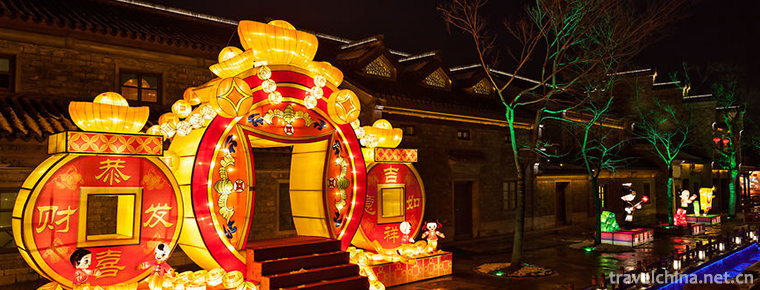
-
The AncientCity of Lang Zhong
Langzhong Ancient City is a national AAAAA-level tourist attraction, a thousand-year-old county, the hometown of Chinese Spring Festival culture, one of the four ancient cities in China..
Views: 165 Time 2018-12-12 -
Bezeklik Thousand Buddha Caves
The Qianfo Cave in Bozikrik is located on the cliff on the West Bank of the Wood Trench, 45 kilometers east of Turpan City, Xinjiang. There are 83 caves and 57 caves.
Views: 132 Time 2019-01-02 -
Tianjin Dule Temple
Dule Temple, also known as the Great Buddha Temple, is located in Jizhou District, Tianjin, China. It is one of the three remaining temples of Liao Dynasty in China and one of the famous ancient build.
Views: 187 Time 2019-01-08 -
Qufuming Old Town
Qufuming Old Town: World Cultural Heritage, one of the three holy cities in the world, national AAAAA tourist attractions, National Scenic spots, national key cultural relics protection units, one of .
Views: 359 Time 2019-02-07 -
Tongguan Yellow River Scenic Area
Tongguan Yellow River Scenic Spot is located at the famous ancient military pass-Tongguan ancient city, 140 kilometers away from Xi'an, only 20 kilometers away from Huashan.
Views: 80 Time 2019-02-22 -
Ewenke to seize the pivot
Pivot-snatching is a traditional competitive event of Ewenki nationality. It was performed by the representative team of Inner Mongolia Autonomous Region in the 6th National Minority Traditional Sport.
Views: 138 Time 2019-04-28 -
Kirgiz embroidery
Kirgiz embroidery is a traditional embroidery in Wensu County, Xinjiang Uygur Autonomous Region, China. Kirgiz women are good at embroidery. They embroider various delicate patterns on headscarves, pi.
Views: 280 Time 2019-05-09 -
Manas
Manas, the traditional folk literature of Kirgiz Autonomous Prefecture in Kizlesu, Xinjiang, is one of the national intangible cultural heritage..
Views: 225 Time 2019-05-16 -
dough figurine
Noodles, also known as face sculptures, models and flowers, are simple but highly artistic Chinese folk crafts. As early as the Han Dynasty, Chinese face sculpture art has been written down. It uses f.
Views: 126 Time 2019-06-05 -
Quanzhou North Pipe
Beiguan, also known as Beiqu, Xiaoqu, Quzi, is a kind of traditional folk silk and bamboo music widely spread in Quangang District, Quanzhou City, Fujian Province. China's Beiguan is now only distribu.
Views: 204 Time 2019-06-11 -
Yongkang Drum Ci
Yongkang Drum Ci is a rap art in Yongkang area of Zhejiang Province. It belongs to the form of singing and talking, which is mainly composed of singing. Because of the use of local dialect performance.
Views: 295 Time 2019-07-14 -
History of Nanchong
In the Northern Song Dynasty (960-1127), there were three states in the territory, which governed 13 counties, such as Nanchong (prefecture), Xichong and Xiangru, which were subordinate to Chengdu Fulu..
Views: 166 Time 2020-12-17
